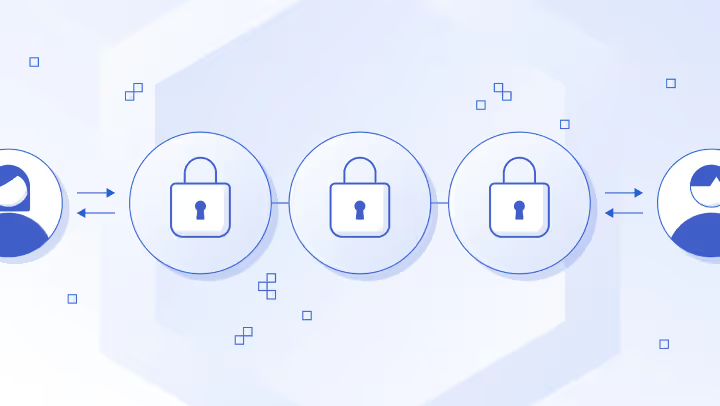Tokenizing In-Game Assets
The tokenization of game assets refers to the process of creating blockchain-based certificates of ownership for in-game items, avatars, and currencies.
Tokenization is empowering gamers by giving them more control over their in-game items, avatars, and currencies. What was once controlled by gaming studios by default is now being placed in the hands of players—and exciting player-driven game economies are emerging as a result. In this post, discover how tokenization is changing games.
<div class="educational-divider sections-divider"></div>
What Do Blockchains Have To Do With Tokenization?
Tokens are effectively digital certificates stored on a blockchain that represent ownership of an asset.
Storing tokens on blockchains—decentralized, permissionless networks—makes them censorship resistant, user controlled, accessible to all, and interoperable across the Web3 ecosystem. Through the use of smart contracts, blockchain-based tokens can then be coded to behave according to preset logic, thereby tightly coupling value with programmability. Tokenization has democratized access to financial markets, helped streamline backend processes for enterprises, and helped create meaningful online communities centered around NFTs. Now, tokens are transforming gaming.
<div class="educational-divider sections-divider"></div>
Game Token Types: Fungible, Non-Fungible, and Dynamic

Comparing Game Token Types
<div class="educational-divider sections-divider"></div>
NFTs for In-Game Assets
Avatars
Many Web3 games let you use your NFT avatar as your game character. The same NFT avatar can even be used across many Web3 games.

Items
NFTs can represent a vast array of in-game items, such as weapons, armor, tools, trophies, and energy packs. Players can then trade items in NFT marketplaces to help them advance through the game faster.

Land
Players can buy, sell, and build on land in a game’s metaverse. By creating fixed amounts of land within a virtual world, games can mirror the supply/demand dynamics of real estate in the physical world.

Skins
Player skins alter an avatar’s appearance, generally for aesthetic rather than performance purposes. Web3 games can enable any creator to design new skins and limit the availability of NFT skins to increase their rarity.

<div class="educational-divider sections-divider"></div>
Dynamic NFTs for Upgradability and Connectivity
Evolving Avatars
Dynamic NFTs can represent an avatar that evolves as a player progresses through a game. Their dNFT avatar could start out as a soldier, level up to a knight, and even become a king. Discover how to build your own dNFT.

Upgradable Items
Similar to an avatar, dNFTs can also be used for upgradable items. A sword could be upgraded to a lance, which could then be upgraded to a staff.

<div class="educational-divider sections-divider"></div>
Fungible Tokens for Sustainable Game Economies
In-Game Currencies
As games evolve, players often want to trade their in-game NFT items and rare dNFT avatars. Instead of relying on inefficient barter dynamics, in-game currencies help players seamlessly trade items.

Real-World Money
As games become more popular, rare in-game assets in high demand can gain significant real-world value. Explore the future of sustainable in-game economies.

<div class="educational-divider sections-divider"></div>
Advantages of Tokenizing In-Game Assets

Digital Asset Ownership
NFTs give players complete control over their in-game assets. When stored in a Web3 wallet, they can use them whenever, wherever, and however they want.
Open Markets
Asset ownership enables players to trade in-game items, currencies, and avatars across open marketplaces, no longer gated and controlled by game publishers.
Gaming Incentives
Incentives with real-world value can make games more fun and exciting, kickstart early-stage adoption, and be used to recognize loyal users. Players’ time, creativity, and contributions can be rewarded in what’s called play-to-earn gaming.
Cross-Platform Compatibility
Tokenized assets aren’t locked into any single gaming platform or ecosystem. Players can move their hard-won weapons or customized avatar seamlessly across different chains and games.

Player-Driven Economies
Any game developer, creator, or player can contribute to a gaming project, or even start their own. Permissionless infrastructure, NFT game communities, and open markets make the gaming economy accessible to all.
Enhanced Security
Web3 infrastructure is natively designed to provide trust minimization, cryptographic guarantees, and transparency, enabling players to protect their assets—even in the presence of malicious actors.
<div class="educational-divider sections-divider"></div>
Web3 Gaming Is Powered by Chainlink

Chainlink Web3 services can help everyone from indie game developers to leading gaming studios create the highest integrity and most engaging blockchain-based games possible.
Combining Chainlink Functions with Chainlink Automation can enable dynamic NFTs to update automatically, and Chainlink VRF can help fairly distribute NFTs from loot boxes.
Disclaimer: This post is for informational purposes only and contains illustrative examples of what may be possible surrounding the use of tokenized gaming assets in the future. Notably, many practical considerations surrounding the future use of tokenized gaming assets fall outside the scope of this post.
Stay up to date with the latest in Web3 gaming by following Chainlink on Twitter and Chainlink Labs on Twitch.











